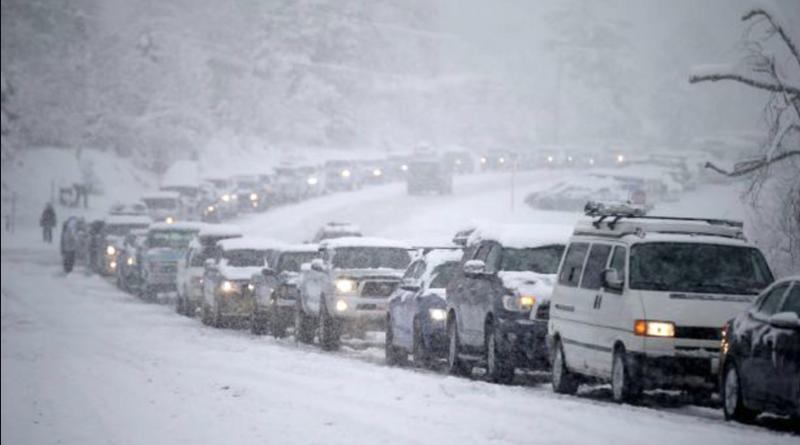Transportation
 By Katherine M. Wehrly
By Katherine M. Wehrly
The opening of ski mountains throughout the Wasatch Canyons catapulted the urbanization of a natural entity into the spotlight. Over the years, skiing has become more normalized and accessible to large amounts of people. This comes with floods of people entering the canyons in hopes to find epic snow for the ultimate day out on the mountain. For the ski resorts, this is fantastic news, a large capacity of people directly means more flow of cash. However, for the continued sustainability of these mountains, it means more pollution, more sewage, and more impact creating a capacity that the mountain cannot handle for years on end. One of the biggest contributing factors to the issue is transportation. Most people going up into the canyons are driving themselves and just one or two others in each vehicle. There are over 15 ski resorts within the Wasatch, so one can imagine how many vehicles that adds up to by the end of the day. A plethora of exhaust, lack of parking spaces, and (without a doubt) daily traffic jams, it is clear that a fundamental transportation change needs to be made to ensure the future sustainability of our ski mountains. We have all experienced the traffic jams that ensue after a long day of epic skiing, these jams are not only inconvenient for those stuck but it also takes a large toll on the mountain and surrounding environment after years of car transportation.
 We learned a lot about possible solutions to this problem from Carl Fisher, the executive director at Save Our Canyons, a non-profit organization that works to protect the Wasatch mountains. They strive “to educate the public and further the goals of protecting the natural environments around Salt Lake City” by getting involved in the local and federal government, raising awareness, getting community members involved through volunteering, among many other initiatives. Carl graduated from the University of Utah in 2005 with degrees in both geography and environmental studies and joined the Save Our Canyons team is 2006. Carl came to speak to our class about the issues of sustainability and transportation within the Wasatch mountains. He was insightful and full of knowledge on this topic and informed us that currently, the best most proactive solution to the human impact on the ski mountains is transitioning to use buses as the main form of transportation up and down the canyon.
We learned a lot about possible solutions to this problem from Carl Fisher, the executive director at Save Our Canyons, a non-profit organization that works to protect the Wasatch mountains. They strive “to educate the public and further the goals of protecting the natural environments around Salt Lake City” by getting involved in the local and federal government, raising awareness, getting community members involved through volunteering, among many other initiatives. Carl graduated from the University of Utah in 2005 with degrees in both geography and environmental studies and joined the Save Our Canyons team is 2006. Carl came to speak to our class about the issues of sustainability and transportation within the Wasatch mountains. He was insightful and full of knowledge on this topic and informed us that currently, the best most proactive solution to the human impact on the ski mountains is transitioning to use buses as the main form of transportation up and down the canyon.
Starting out with buses is the most achievable with the help of resorts, government, and of course - the cooperation of skiers and snowboarders. Implementing more buses as the main mode of transportation into the canyons will get more vehicles off the road, improve air quality, and take pressure off the actual canyon. Save Our Canyon is actively working on a legislation bill for buses to get police escorts during peak traffic times in the canyons to pass by the congestion of vehicles. This is a perk that would incentivize people to take the bus instead of their personal cars as it would be much faster with a police escort. One bus will cost approximately half a million dollars, this may seem expensive, however, compared to its counterparts of trains or gondolas, it is a small price to pay. As Carl said, we need to “give a little to gain a lot.” Fewer vehicles driving in the canyons equals less traffic, it's a win for us and a win for the sustainability of our environment.
